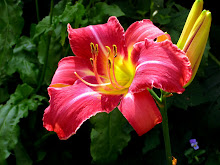Right now: the first planting of broccoli is already in the freezer, about 16 bags’ worth, and the plants are still sending out side shoots. The second broccoli planting is still a few weeks away from harvest. Green beans are coming fast and furious – I planted less than half as much as usual this year, four varieties on two six-foot-tall tepees, but it’s still more than I can keep up with; some go in the freezer, some to relatives, lots eaten raw for snacks. Cucumbers are crazy this summer! – abundant and delicious – we eat one every day, we hand them out to family and friends, the chickens get some too. We’ve got corn on the cob on our supper menu nearly every day now, and there will be plenty to put in the freezer very soon. Collards are so easy – they’re cut into one-inch pieces and tossed into freezer bags, no blanching needed; later they’ll be tossed into soups for extra nutrition. And the melons! – sweet, fragrant, delicious muskmelons this year, the best ever thanks to the hot summer; lots of them go into the freezer, cubed, for winter treats.
And what a year for hornworms! There were days when we were picking off a dozen or more at a time, and tossing them to the chickens. Not only did they go after the tomatoes, but the peppers as well, stripping the leaves and exposing the fruit -- which they'd munch on as well (see the little hole in the pepper in the back?). Now that the nights are so cool (often in the forties), the worst seems to be over.

My current favorite recipe uses what’s in season right now, and is flexible enough to accommodate new items at any time. It’s a roasted dish: zucchini, summer squash, tomatoes, peppers, onions, garlic, kale, all chopped; oregano, basil, winter savory; all mixed with olive oil and just a wee bit of balsamic vinegar (which REALLY punches up the flavor). Popped into a 350 oven for 30 minutes or so, then served with either feta or Romano or Parmesan cheese sprinkled on top, it’s sooooo delicious!










